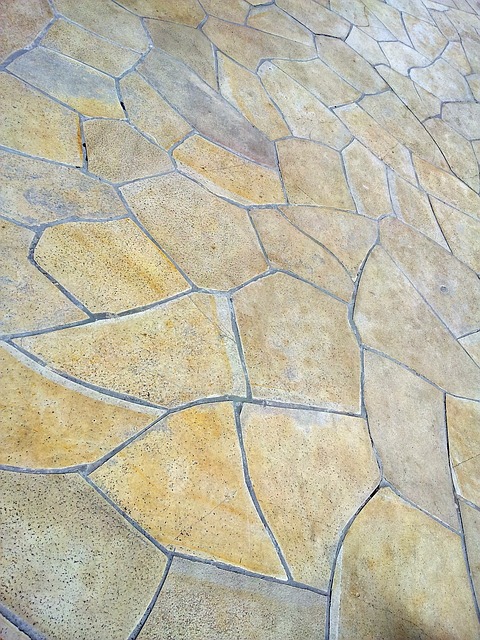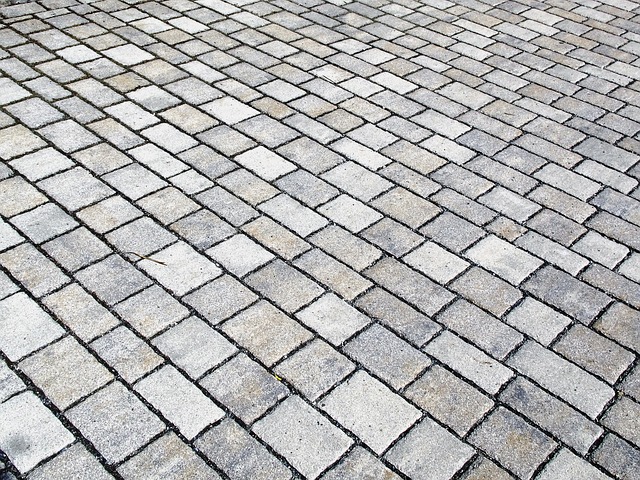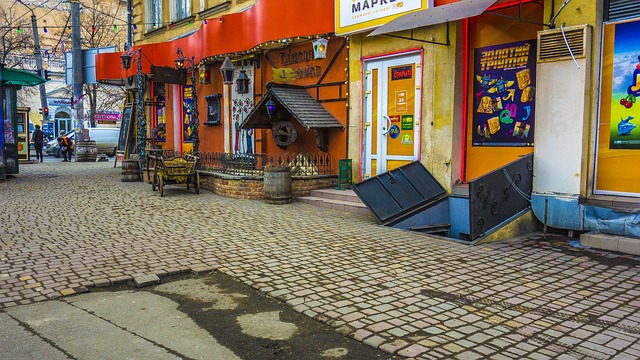Paver sealing service is an essential maintenance practice that extends the life of hardscape structures by shielding them from weather-related damage. This service involves applying a protective barrier that repels moisture and insulates against freeze-thaw cycles, thereby preventing water infiltration that can lead to erosion and structural weakening. Regular paver sealing not only preserves the attractive colors and finish of paving stones but also acts as a preventive measure against costly repairs, safeguarding property value and allure over time. Professional paver sealing services provide thorough cleaning, power washing, sealant application—often requiring multiple coats—and guidance on post-sealing care to maintain the integrity of the seal. It's recommended that this service is performed every 2-5 years, depending on local climate and usage, to ensure ongoing protection against the elements and to keep maintenance costs low. Investing in a paver sealing service is a proactive approach to maintaining your outdoor assets in top condition.
Protecting your property from water damage is paramount, and understanding the role of paver sealing service is key. As pavement surfaces endure the elements, they can develop cracks that invite moisture, leading to costly repairs and compromised structural integrity. This article delves into identifying such vulnerabilities and offers a comprehensive step-by-step guide on executing a professional paver sealing process. By exploring the long-term benefits and maintenance of sealed pavers, homeowners and professionals alike can safeguard their investments against the relentless effects of water damage.
- Understanding the Importance of Paver Sealing Service for Water Damage Prevention
- Identifying Cracks and Vulnerabilities in Pavement Surfaces
- Step-by-Step Guide to Professional Paver Sealing Process
- Long-Term Benefits and Maintenance of Sealed Pavers Against Water Damage
Understanding the Importance of Paver Sealing Service for Water Damage Prevention

Regular maintenance is paramount for the longevity and integrity of any hardscape, particularly in regions prone to extreme weather conditions. Among the most critical aspects of this maintenance is the paver sealing service, a process that offers robust protection against water damage. This protective measure essentially acts as a shield, preventing moisture from penetrating the porous surfaces of paving stones and concrete. The sealant forms a barrier that not only repels water but also shields the underlying substrate from the detrimental effects of freeze-thaw cycles, which can lead to cracking and structural failure.
Paver sealing service not only enhances the aesthetic appeal by giving surfaces a uniform appearance and rich color, but it also extends the lifespan of the hardscape significantly. By preventing water infiltration, the sealant preserves the bond between pavers and the base, thus deterring deterioration caused by erosion or water seepage. This proactive approach to hardscape maintenance can mitigate costly repairs down the line, ensuring that properties maintain their value and appeal over time. Homeowners and businesses alike should consider this service a vital investment in the protection of their outdoor assets against the relentless forces of nature.
Identifying Cracks and Vulnerabilities in Pavement Surfaces

Identifying cracks and vulnerabilities in pavement surfaces is a critical step in maintaining their integrity and prolonging their lifespan. Over time, environmental factors such as freeze-thaw cycles, heavy traffic, and settling can lead to surface distress that, if left unaddressed, can compromise the structural stability of the pavement. Homeowners and businesses alike should be vigilant in inspecting their pavements for signs of distress. This is where a professional paver sealing service comes into play. Such services not only apply protective sealants to prevent water intrusion but also conduct thorough assessments to pinpoint areas that require immediate attention. By using advanced techniques and high-resolution imaging, these experts can detect even the most subtle cracks, ensuring that each inch of pavement is secure. Early detection and timely intervention with a paver sealing service can prevent minor cracks from evolving into larger issues, thus safeguarding your investment and preserving the aesthetic appeal of your property. Regular maintenance and proactive sealing can significantly mitigate the risks associated with water damage and pavement deterioration, maintaining the functionality and safety of your surfaces.
Step-by-Step Guide to Professional Paver Sealing Process

When it comes to safeguarding your outdoor surfaces, professional paver sealing is a vital step in extending their lifespan and protecting them from water damage. This process involves several key steps that ensure the pavers are sealed effectively, creating a barrier against the elements. To begin, the area to be sealed should be thoroughly cleaned. This involves removing all debris, moss, algae, dirt, and stains with a wire brush or broom and a suitable cleaner. The surfaces must then be power washed to remove any remaining contaminants, ensuring that the pores of the pavers are open for optimal sealing.
Once the pavers are dry—typically within 24 hours after cleaning—the application of the sealant begins. A reputable paver sealing service will use high-quality sealers that are designed to penetrate deep into the paver’s pores, providing long-lasting protection. The sealant is applied using a sprayer or roller, ensuring an even coat that saturates the pavers without pooling or running off. Multiple coats may be necessary for maximum effectiveness, with each layer given ample time to dry according to the product’s specifications. After the final application, the sealant needs to cure, a process that can take several days, depending on weather conditions and the type of sealer used. During this time, the pavers should not be walked upon or exposed to harsh chemicals, as this could compromise the seal. A professional paver sealing service will provide guidance on the care required during this critical curing period, ensuring that your outdoor surfaces are well-protected for years to come.
Long-Term Benefits and Maintenance of Sealed Pavers Against Water Damage

Engaging in a paver sealing service offers lasting protection against water damage for paved surfaces. This proactive measure extends the lifespan of pavers by shielding them from the erosive effects of moisture. Sealed pavers are less susceptible to freeze-thaw cycles, which can cause cracks and eventual deterioration. The protective sealant forms a barrier that prevents water from penetrating the pavers’ surface, thus mitigating the risk of water seeping into the base and destabilizing the structure. Over time, this results in reduced maintenance costs and an avoidance of costly repairs. Moreover, the sealant enhances the appearance of the pavers by maintaining their color and finish, ensuring they retain their aesthetic appeal throughout the seasons. Regular resealing every few years, depending on environmental factors like rainfall and foot traffic, is crucial to maintain this protection and keep the pavers in optimal condition. This maintenance strategy not only preserves the integrity of the pavement but also ensures that it continues to serve its intended purpose effectively, year after year.
In conclusion, the protection of paved surfaces through paver sealing service plays a pivotal role in safeguarding against water damage and mitigating structural deterioration. By identifying cracks and vulnerabilities within these surfaces, proactive measures can be taken to ensure longevity and maintain aesthetics. The detailed guide provided illuminates the professional paver sealing process, a vital practice for any property owner seeking to preserve their investments. Embracing this service offers long-term benefits, reducing maintenance demands and preventing costly repairs due to water intrusion. Thus, regular paver sealing serves as an indispensable defense, keeping paved areas intact and resilient in the face of environmental elements.
